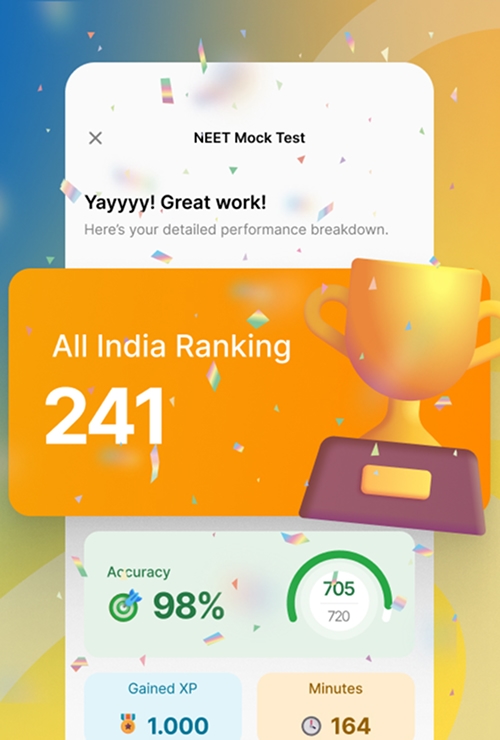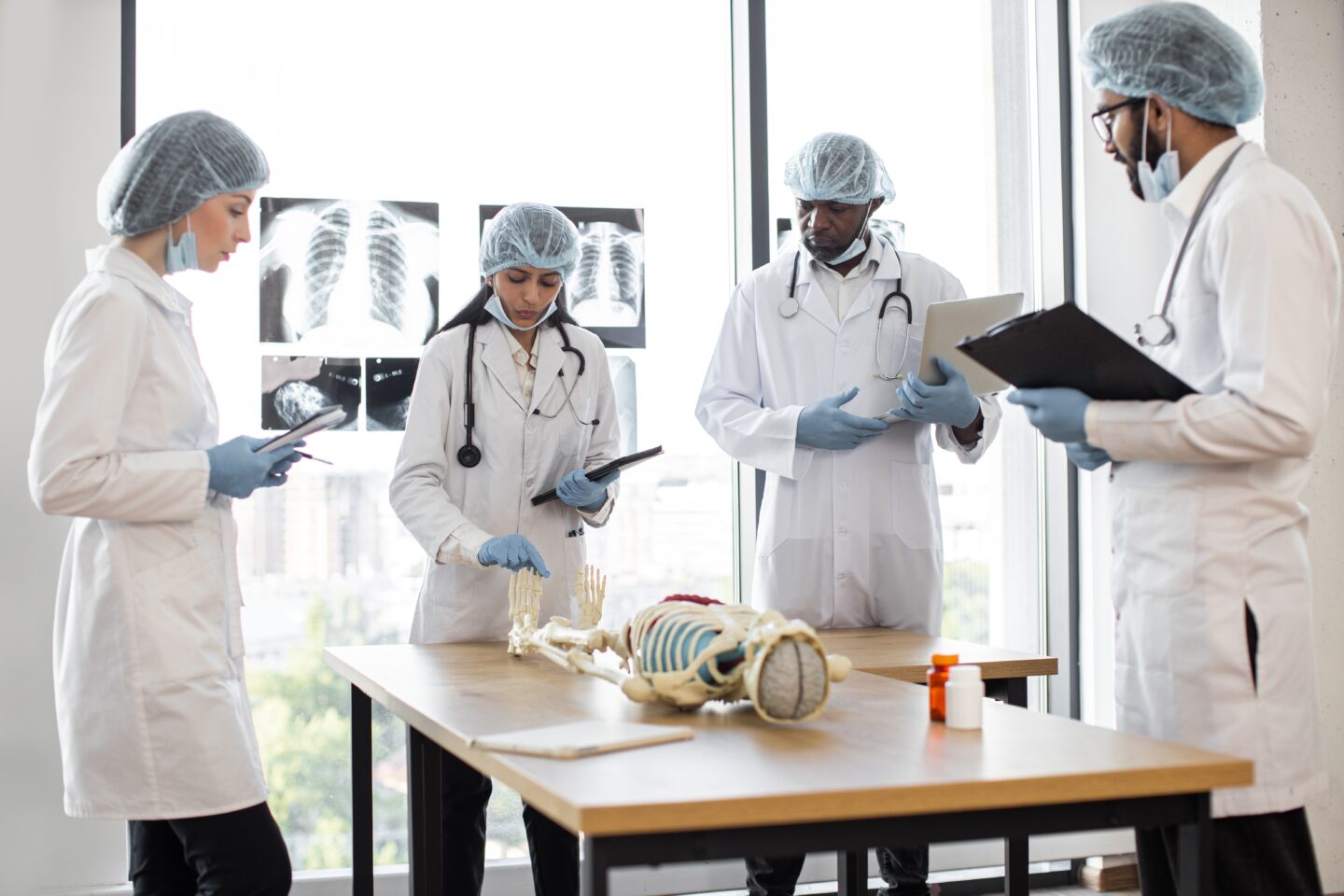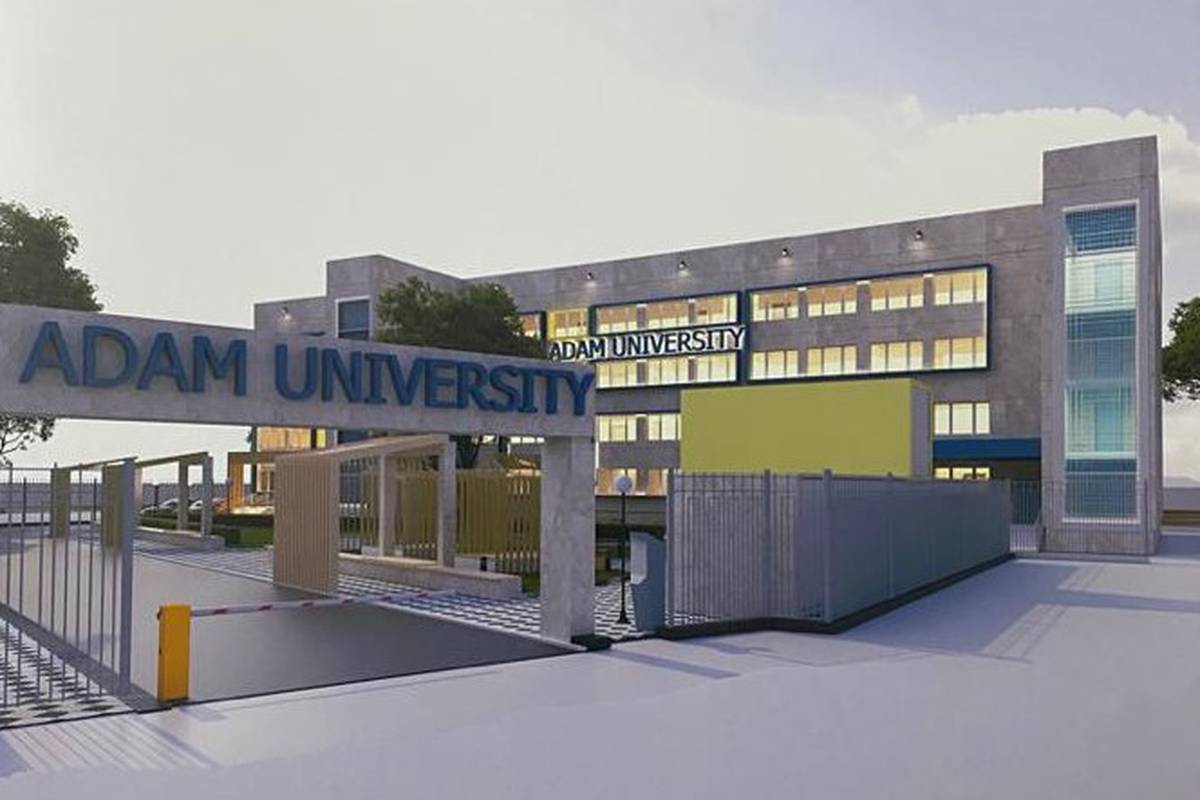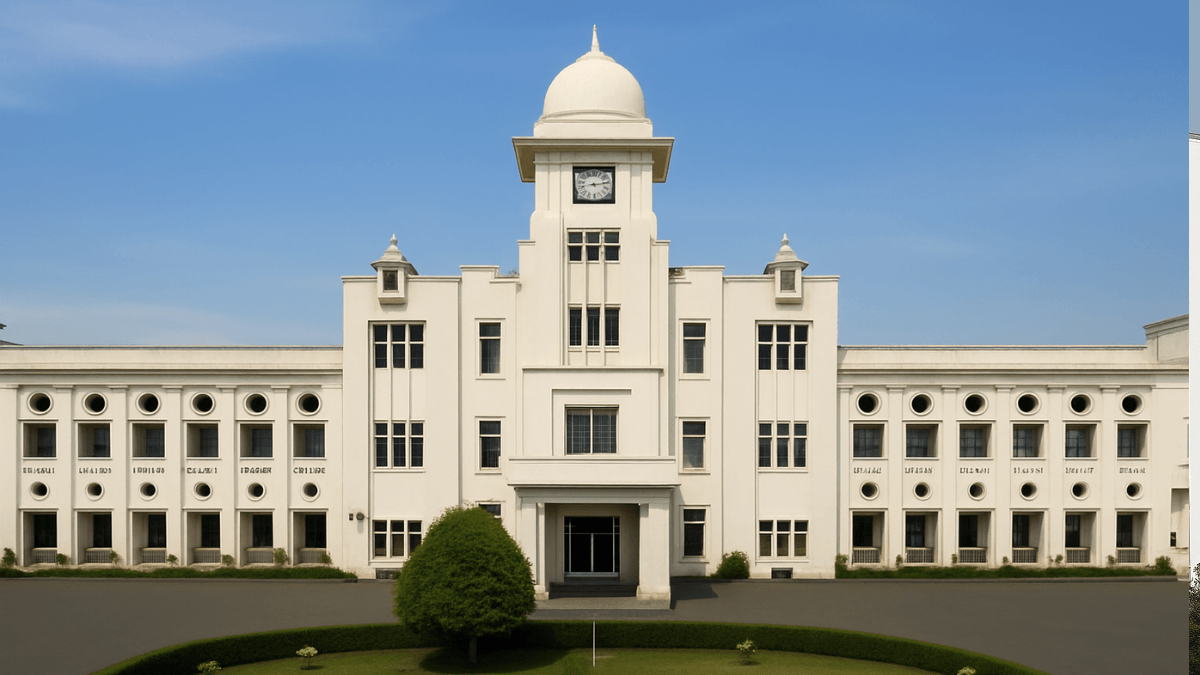
☝️ At a glance
- Government medical colleges offer annual tuition fees as low as INR 6,000, making MBBS education highly accessible compared to global standards.
- Courses are comprehensive, regularly updated, and designed to meet international medical standards, preparing graduates for global opportunities.
- Students benefit from a broad spectrum of clinical experiences across India's varied demographic and disease profiles.
- Many colleges support active participation in cutting-edge medical research, enhancing academic and practical knowledge.
- After MBBS degree, numerous specialties and super-specialty options are available, with recognized qualifications for further career advancement.
Pursuing an MBBS course in India is a significant commitment, both academically and financially. This comprehensive guide will dissect the various costs associated with studying MBBS across different types of medical colleges in India. The goal is to provide a clear picture of what aspiring doctors can expect to invest for their education.
The MBBS (Bachelor of Medicine, Bachelor of Surgery) degree is the cornerstone of medical education in India. It's a highly sought-after qualification due to the prestigious career path it offers. The course duration is typically five and a half years, which includes a one-year mandatory internship.


Why MBBS in India?

Studying MBBS in India is an attractive prospect for numerous reasons, ranging from the quality of education and affordable tuition fees to the country’s rich cultural diversity. Here's a detailed exploration of why pursuing an MBBS in India is a favored choice for many aspiring doctors, both domestically and internationally.
1. Extensive network of medical colleges
India boasts one of the largest networks of medical colleges in the world, with institutions spread across the country, from major urban centers to rural areas. This network includes prestigious government institutions like the All India Institute of Medical Sciences (AIIMS) and private colleges such as the Christian Medical College (CMC) Vellore. Each type of institution offers its unique advantages, from the highly subsidized tuition of government colleges to the advanced facilities and broader exposure available in private colleges.
2. Affordable quality education
One of the most compelling reasons to study MBBS in India is the affordability of quality medical education. Compared to Western countries, where the cost of medical education can be exorbitant, India provides highly subsidized rates in government institutions and reasonable fees in private colleges. This makes medical education accessible to a larger section of society, helping bridge the gap between demand and supply for qualified medical practitioners.
3. Globally recognized curriculum
The curriculum for MBBS in India is comprehensive, designed to meet global standards, ensuring that graduates are well-prepared to work anywhere in the world. The courses are updated regularly to keep pace with the latest developments in medicine and technology. The curriculum also includes hands-on training through internships and hospital rotations, which are integral to the program, providing real-world experience that is crucial for a successful medical career.
4. Rigorous standards and accreditation
Medical colleges in India are regulated by the National Medical Commission (NMC), which ensures that the education provided meets stringent quality standards. NMC’s oversight guarantees that the medical education in India is on par with global benchmarks, making Indian MBBS degrees recognized and respected worldwide. This rigorous regulation helps maintain a high standard of medical education, which is critical given the sensitive nature of the profession.
5. Diverse clinical exposure
India’s diverse population, coupled with a wide range of prevalent diseases, offers medical students a unique and broad clinical exposure. This diversity in clinical training is seldom matched by other countries, providing Indian medical graduates with the ability to diagnose and treat a wide array of conditions. This exposure is invaluable in the medical field where experience plays a crucial role in ensuring effective patient care.
6. Research opportunities
Many Indian medical colleges are involved in cutting-edge research projects, receiving funding and support from major national and international health organizations. These opportunities make it possible for ambitious students to contribute to meaningful advances in medical sciences, even during their undergraduate years.
7. Postgraduate opportunities
Upon completion of the MBBS degree, India offers numerous opportunities for postgraduate studies, including specialized MD and MS programs, diplomas, and super-specialty courses, which are highly recognized. The competitive but comprehensive postgraduate entrance exams further ensure that the most capable students advance to these levels.
8. Cultural and social enrichment
Studying MBBS in India also offers an enriching experience outside of academics. India’s rich cultural heritage, diverse languages, and traditions provide a vibrant backdrop that enhances personal growth and social interactions. The experience of navigating through India’s multicultural environment can significantly develop one’s adaptability and interpersonal skills, which are invaluable for a medical professional.
9. Growing healthcare sector
India’s healthcare sector is on a rapid growth trajectory, driven by advancements in medical technology and increased investment in healthcare infrastructure. This growth translates into better facilities in medical colleges and more opportunities for graduates in terms of employment and professional growth within the country.
10. Supportive legal framework
India has a supportive legal and policy framework aimed at boosting medical education and making India a global hub for medical education. Initiatives like the establishment of AIIMS in various states and the sanctioning of new medical colleges are steps taken by the government to improve the availability and quality of medical education.
Click here to download the NEET Zoology chapter-wise weightage
Download PDFMBBS course structure
The MBBS (Bachelor of Medicine and Bachelor of Surgery) course in India is structured to provide a comprehensive education in medicine over the span of 5.5 years, including a one-year mandatory internship. This rigorous program prepares students for a variety of roles in the healthcare sector, from clinicians to researchers. Here's an in-depth look at the course structure:
1. Pre-clinical phase (Years 1-2)
The initial years focus on basic sciences and foundational subjects necessary for a medical career. These include:
- Anatomy: Study of human body structure.
- Physiology: Functions of the body and its parts.
- Biochemistry: Chemical processes within and related to living organisms.
2. Para-clinical phase (Year 3)
This phase introduces students to subjects that bridge basic sciences and clinical medicine, providing a deeper understanding of pathologies and diagnostic procedures:
- Pathology: Study of the causes and effects of diseases.
- Microbiology: Study of microorganisms affecting human health.
- Pharmacology: Medicines and their effects on the body.
- Forensic medicine: Medical principles applied to legal issues.
- Community medicine: Health management and preventive medicine in community settings.
3. Clinical phase (final years)
In the final years, students undergo rigorous training in various medical specialties through rotations in hospitals affiliated with their college. This hands-on training is critical in building practical skills and clinical decision-making abilities:
- General medicine
- General surgery
- Obstetrics and gynecology
- Pediatrics
- Orthopedics
- ENT (Ear, Nose, and Throat)
- Ophthalmology
- Dermatology
- Psychiatry
4. Internship (final year)
The internship is a practical phase where students rotate across various specialties, applying their knowledge in real-world settings. This is a salaried position, and students are required to handle responsibilities under supervision, gaining invaluable experience.
Click here to download the NEET Botany chapter-wise weightage
Download PDFSpecialization options
After completing the MBBS, students can opt to specialize further by pursuing postgraduate studies such as MD (Doctor of Medicine) or MS (Master of Surgery) in various fields, which requires additional entrance examinations.
Table: Typical MBBS curriculum structure
Year | Focus Area | Key Subjects/Specialties |
|---|---|---|
1-2 | Pre-Clinical | Anatomy, Physiology, Biochemistry |
3 | Para-Clinical | Pathology, Microbiology, Pharmacology, Forensic Medicine, Community Medicine |
4-5 | Clinical Rotations | Medicine, Surgery, OB/GYN, Pediatrics, Orthopedics, ENT, Ophthalmology |
5.5 | Internship | Rotations across all major specialties |
This structure ensures that MBBS graduates are well-prepared to either immediately enter the healthcare workforce or pursue further specialization, equipped with a robust foundation in both the theoretical and practical aspects of modern medicine. The curriculum is designed not only to develop skilled physicians but also to nurture empathetic practitioners who can contribute meaningfully to patient care and medical research.
Cost breakdown of MBBS in government and private medical colleges

1. Government medical colleges
- Tuition fees: Typically, these range from INR 6,000 to INR 50,000 annually, making it an affordable option for quality medical education.
- Accommodation costs: Hostel facilities, if available, can range from INR 10,000 to INR 30,000 per year.
2. Private medical colleges
- Tuition fees: These can vary significantly – from about INR 2 lakhs to over INR 25 lakhs per year depending on the prestige and location of the institution.
- Accommodation costs: Generally, higher than government colleges, ranging from INR 50,000 to INR 1.5 lakhs annually.
Table: Comparative tuition fees in medical colleges
Type of college | Average annual tuition fee (INR) |
|---|---|
Government | 6,000 - 50,000 |
Private | 200,000 - 2,500,000 |
Additional costs involved in MBBS
- Books and supplies: Could cost between INR 10,000 to INR 50,000 yearly.
- Miscellaneous fees: Including lab fees, library fees can add another INR 10,000 to INR 50,000 annually.
Admission process and eligibility
1. Understanding NEET: The National Eligibility cum Entrance Test (NEET) is conducted by the National Testing Agency (NTA). It is the only entrance test for admission into MBBS courses in the country, making it one of the most competitive examinations in India. NEET tests the candidate’s knowledge in Physics, Chemistry, and Biology, which are crucial for the medical profession.
2. Application to NEET: Students must register for NEET by filling out an online application form available on the official website. The process includes submitting various personal and academic details, followed by payment of the application fee. It’s crucial for applicants to ensure that all information provided is accurate to avoid any issues during the admission process.
3. Preparing for NEET: Preparation for NEET requires rigorous study and a deep understanding of the three subjects. Many students enroll in coaching classes, while others opt for self-study, utilizing various resources like textbooks, online courses, and mock tests.
4. Taking the NEET exam: NEET is typically held once a year, and the exam format includes multiple-choice questions. Students are tested on their analytical skills and their ability to apply the scientific knowledge practically. The results of NEET are usually declared about a month after the examination.
Eligibility criteria for MBBS in India
1. Academic qualifications: Aspiring medical students must have completed their 10+2 or equivalent examination from a recognized board. They should have studied Physics, Chemistry, and Biology/Biotechnology as their core subjects and have secured a minimum aggregate percentage as prescribed by the NMC (National Medical Commission).
2. Age requirements: The minimum age limit to appear for NEET is 17 years at the time of admission or by the end of the year in which the admission is sought. There is also an upper age limit which has seen changes and legal challenges but typically allows candidates up to 25 years of age for the general category, with age relaxations applicable to candidates from reserved categories.
3. Nationality: Indian Nationals, NRIs, OCIs, PIOs, and Foreign Nationals are eligible to apply for NEET, thus enabling them to pursue MBBS in India.
4. NEET qualification: Post the NEET examination, candidates need to secure a rank that is either equal to or lower than the closing rank for MBBS admissions at their chosen medical college. This rank varies annually based on several factors including the number of candidates, difficulty levels of the exam, and availability of seats.
The Importance of counselling sessions
Post qualifying NEET, students must participate in counseling sessions conducted either at the national level by the Medical Counselling Committee (MCC) for All India Quota seats or by respective state counseling authorities for state quota seats. During these sessions, students are allocated seats in medical colleges based on their NEET scores, preferences, and availability of seats.
Financial aid and scholarships
Many scholarships are available for students based on merit or financial need, offered by various governmental and non-governmental organizations.
Employment prospects post-MBBS
Post-MBBS, graduates have a variety of employment opportunities across both public and private sectors, and their starting salaries can vary significantly based on factors such as location, the type of healthcare facility, and their own specialization and skills. Many opt to continue their education with postgraduate degrees like MD (Doctor of Medicine) or MS (Master of Surgery), which can enhance their qualifications and lead to better job prospects and higher salaries.
For a clearer picture, here's a table of estimated starting salaries for MBBS graduates in various settings:
Employment Sector | Typical starting salary range (per month) |
|---|---|
Government Hospitals | INR 50,000 to INR 80,000 |
Private Hospitals | INR 60,000 to INR 1,00,000 |
Non-Profit Organizations | INR 40,000 to INR 70,000 |
Overseas Opportunities | $4,000 to $6,000 (or equivalent) |
These salaries can increase with experience, additional qualifications, and specialization.
Detailed cost analysis over 5 years
Here's a detailed look at potential costs over the typical duration of MBBS education in India:
Table: 5-year cost analysis for MBBS in India
Expense Category | Government College (INR) | Private College (INR) |
|---|---|---|
Tuition Fees | 30,000 - 250,000 | 1,000,000 - 12,500,000 |
Accommodation | 50,000 - 150,000 | 250,000 - 750,000 |
Books & Supplies | 50,000 - 250,000 | 50,000 - 250,000 |
Miscellaneous | 50,000 - 250,000 | 50,000 - 250,000 |
Total | 180,000 - 900,000 | 1,350,000 - 13,800,000 |
Top MBBS universities in India and their costs
Table: Cost of MBBS at leading Indian universities
University name | Location | Government/Private | Annual tuition fee (INR) | Total course fee (INR) |
|---|---|---|---|---|
All India Institute of Medical Sciences (AIIMS) | New Delhi | Government | 1,628 | 9,768 |
Christian Medical College (CMC) | Vellore | Private | 40,000 | 2,40,000 |
Armed Forces Medical College (AFMC) | Pune | Government | 64,000 | 3,84,000 |
Maulana Azad Medical College (MAMC) | New Delhi | Government | 10,000 | 60,000 |
Kasturba Medical College (KMC) | Manipal | Private | 13,10,000 | 78,60,000 |
Lady Hardinge Medical College | New Delhi | Government | 6,000 | 36,000 |
Madras Medical College | Chennai | Government | 13,710 | 82,260 |
JSS Medical College | Mysuru | Private | 14,71,750 | 88,30,500 |
Ramaiah Medical College | Bangalore | Private | 25,45,750 | 1,52,74,500 |
St. John's Medical College | Bangalore | Private | 5,56,000 | 33,36,000 |
Gandhi Medical College | Hyderabad | Government | 10,000 | 60,000 |
Goa Medical College | Goa | Government | 30,000 | 1,80,000 |
Bharati Vidyapeeth Medical College | Pune | Private | 12,75,000 | 76,50,000 |
Sri Ramachandra Medical College | Chennai | Private | 22,00,000 | 1,32,00,000 |
Jawaharlal Institute of Postgraduate Medical Education & Research (JIPMER) | Pondicherry | Government | 5,000 | 30,000 |
DY Patil Medical College | Pune | Private | 25,75,000 | 1,54,50,000 |
Student life during MBBS in India
MBBS colleges in India provide ample opportunities for students to engage in extracurricular activities, which are vital for holistic development. These include:
- Sports: Most medical colleges have sports facilities and organize annual sports tournaments. Participating in sports helps students maintain physical fitness and develop team spirit.
- Cultural festivals: Annual cultural fests are major events in medical colleges, featuring dance, music, drama, and literary competitions. These festivals offer a much-needed break from the rigorous study schedule and allow students to showcase their talents.
- Student organizations: Many students participate in student-led organizations and clubs that conduct scientific forums, guest lectures, and workshops on current medical advancements. These activities complement their academic learning with exposure to real-world medical issues and innovations.
- Community service: Students often participate in community service and health camps organized by their colleges. These activities are aimed at providing medical services in rural and underserved areas, offering students a perspective on public health issues.
List of necessary documents for MBBS admission:
NEET admit card and score card: The National Eligibility cum Entrance Test (NEET) is mandatory for admission into any medical college in India. Students must provide both the admit card and the scorecard to validate their eligibility based on their NEET scores.
Class 10th certificate and mark sheet: These documents serve as proof of date of birth and successful completion of secondary education. They are crucial for initial verification processes.
Class 12th certificate and mark sheet: As the basic eligibility criterion for MBBS admission requires passing the 12th standard with Physics, Chemistry, Biology/Biotechnology, and English, these documents are indispensable.
Migration and conduct certificate: Issued by the school last attended, these certificates are necessary for students who are joining from a different state or board other than the one where the medical college is located.
Caste certificate (if applicable): For students seeking admission under reserved categories, a valid caste certificate as per the government norms is required to avail of the reservation benefits.
Domicile certificate: Certain state-run medical colleges give preference to students who are residents of that state. The domicile certificate proves the residency status of a candidate.
Character certificate: This certificate, typically issued by the school last attended or a gazetted officer, attests to the behavior and conduct of the student.
Passport size photographs: A specified number of recent passport-sized photographs are needed for various components of the admission process.
Aadhaar card: This serves as a primary ID proof for Indian nationals.
Provisional allotment letter: This document is issued during the counseling process and must be submitted at the time of admission.
Gap year affidavit (if applicable): For students who have taken a gap year(s) after completing their 12th standard, an affidavit explaining the gap and certifying no indulgence in any other professional course is required.
Medical fitness certificate: A certificate from a registered medical practitioner stating that the candidate is medically fit to pursue the MBBS course.
Conclusion
Embarking on an MBBS journey in India is more than just an educational pursuit; it’s an adventure that molds students into future doctors armed with comprehensive knowledge, clinical expertise, and a compassionate approach to medicine. The journey is rigorous but highly rewarding, with its fair share of challenges and triumphs. Aspiring medical students should prepare to engage fully in their studies, immerse themselves in diverse clinical experiences, and seize the opportunity to learn from some of the brightest minds in medicine.
Preparing for the NEET exam is a critical step in this journey. Tools like NEETsheet by futureMBBS offer prospective students valuable resources for exam preparation. From practice tests to expert guidance, NEETsheet provides an essential platform to help you achieve your medical career aspirations. By effectively utilizing such tools and embracing the comprehensive educational opportunities offered by Indian medical colleges, students can ensure they are well-equipped to excel in their future medical careers.
Click here to download the NEET 2025 official syllabus.
Download PDFFREQUENTLY ASKED QUESTIONS
FAQs about "Cost of MBBS in India"
What is the average cost of studying MBBS in a government college?
The average cost can range from INR 180,000 to INR 900,000 for the entire duration.
Are there any hidden costs in MBBS programs?
Beyond tuition and accommodation, students should consider costs for books, supplies, and miscellaneous university fees.
Can international students avail scholarships for MBBS in India?
Yes, several scholarships are available which international students can apply for, depending on the college and their eligibility.
What is the starting salary for MBBS graduates in India?
It varies widely but typically ranges from INR 50,000 to INR 80,000 per month in the public sector.
How competitive is the admission process for MBBS in India?
Extremely competitive, with lakhs of students appearing for NEET annually for limited seats.






